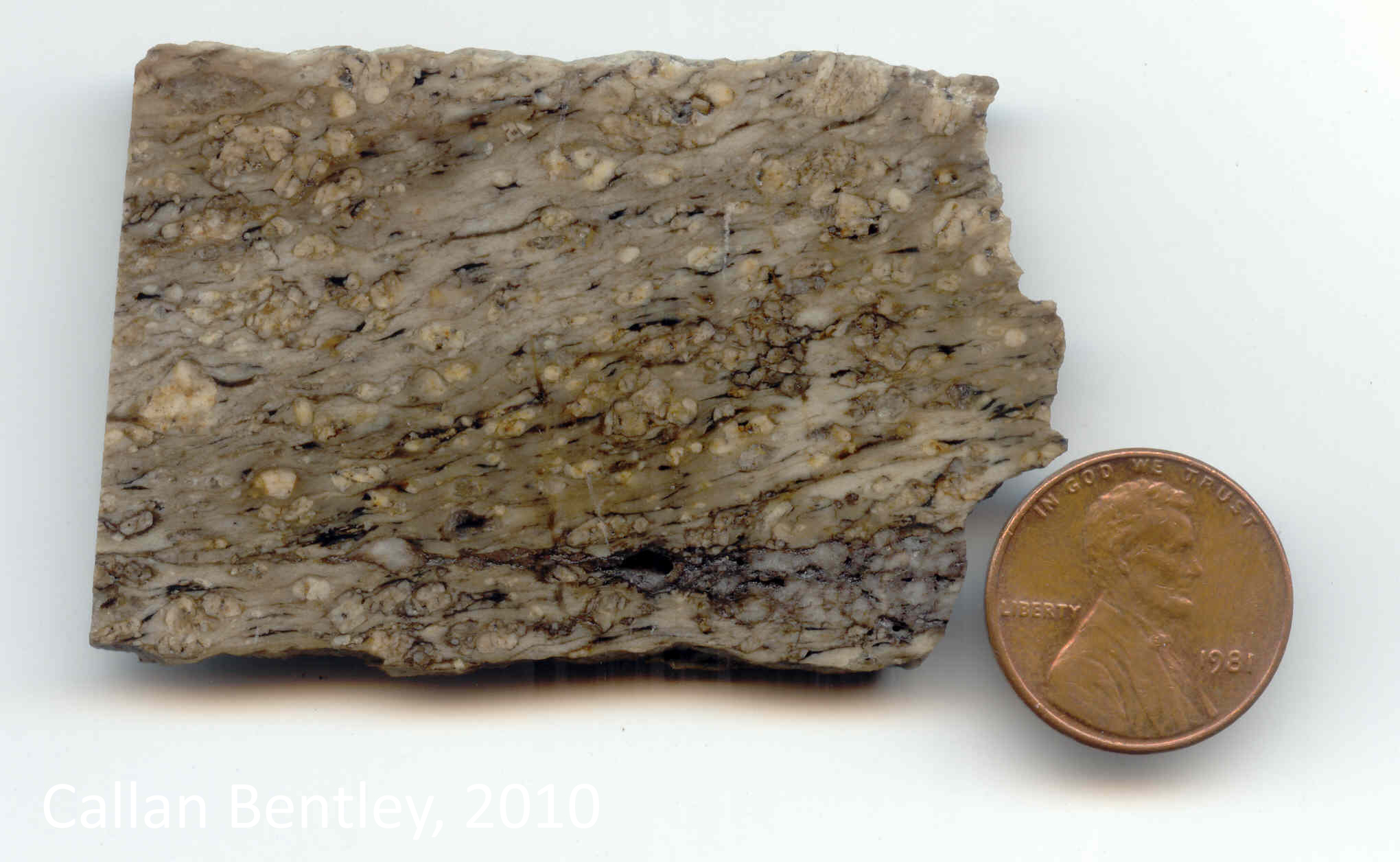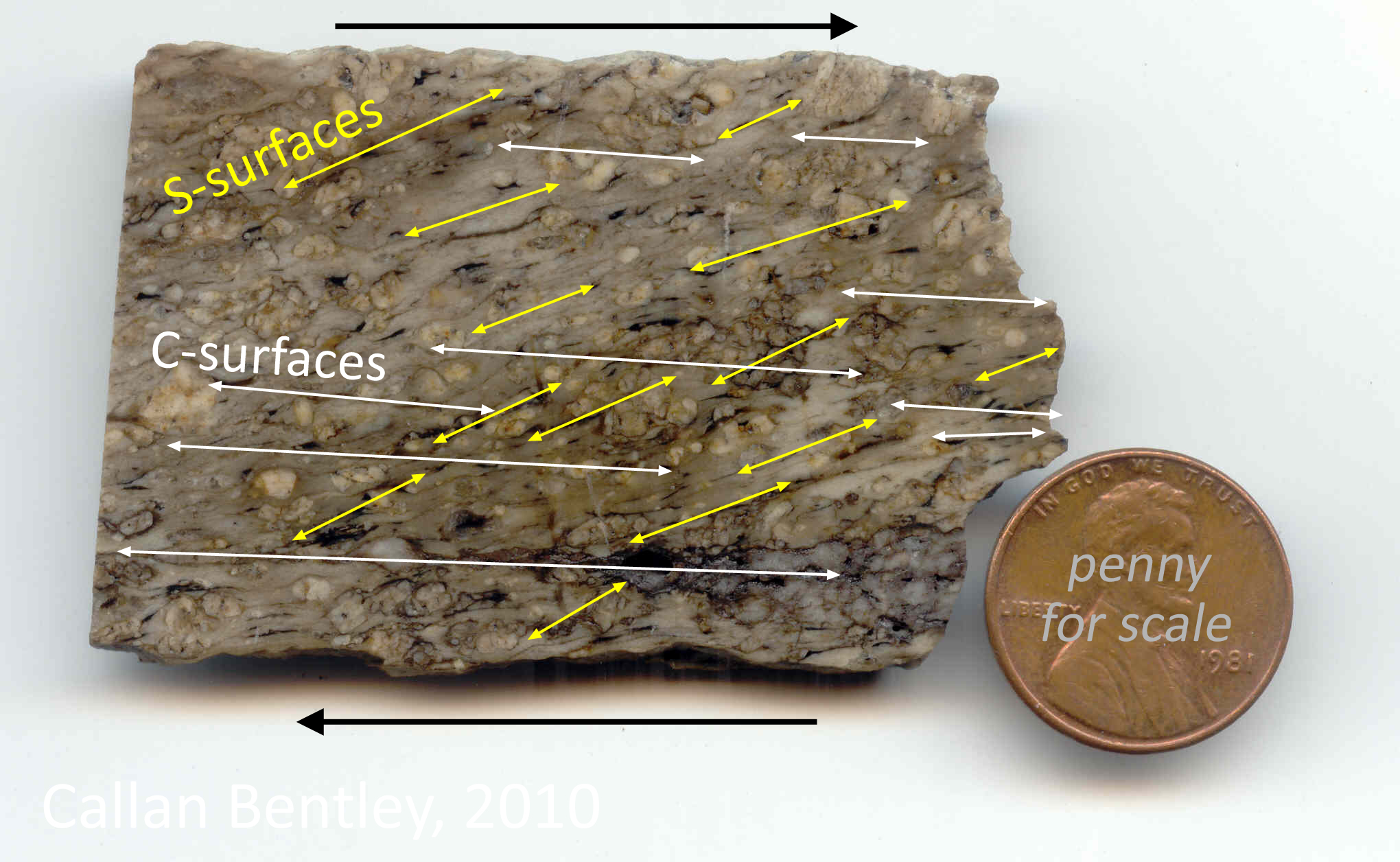Here’s a sample from my 2004 geology M.S. thesis work in the Sierra Crest Shear Zone of eastern California. The rock is a sheared ignimbrite (ashflow tuff) tuff bearing a porphyritic texture and a nicely-developed “S-C” fabric.
With annotations, showing the S- and C-surfaces, and my kinematic interpretation:
S-C fabrics develop in transpressional shear zones: ~tabular zones of rock that are subjected both to compression and lateral shear (“transform” motion). The S-surfaces (foliation) initially form at about 45° to the shear zone boundary, and then progressively tilt over in the direction of shearing as deformation proceeds. This gives this sample (when viewed from this angle) a dextral (top to the right) sense of shear. (previous examples on Mountain Beltway) The C-surfaces are shear bands, where a large amount of shear strain (parallel to the shear zone boundary) is accommodated.
You should be able to click through (twice) for big versions of these images.
I polished up this little slab and made a refrigerator magnet out of it. I think it’s a lovely rock.



I must confess that I’m having a hard time visualizing the c-surfaces, even using the embiggened versions. Based on the lowest arrow in your second image, I am under the impression that I should be looking for features that run parallel to the text in the post (as opposed to the very clear features running about 20 degrees off the text, which I take to be the s-surfaces). The lowest 0-degree line jumps off the screen at me, but I can’t see the rest.
Am I misunderstanding?
(P.S. — I love your blog).
Hi Ezra,
Thanks for the note, and the kind comment. I’ll endeavor to cook up a post that explains it better. Want to annotate a copy yourself so I know specifically what you’re referring to? Then shoot it to me via e-mail attachment (or post it online and link to it here), and I can figure out how best to respond.
C
I like your example and description of S-C fabric. I agree with your usage of “tabular zones” in this respect. In an example that I have, S is sometimes curved like an s, showing the shear sense and sericitic crenulation has developed between the shear planes as well as parallel pressure solution seams in which opaue matter has been enriched. The rock is a lepidoblastic phyllite. Quartz porphyroblasts tend to become enriched along the C planes.
A question that I would like to ask is: the tabular zone in my case is thrustfault shear zone which I would like to refer to as a “shear couple” in which the angle between C and S gets incrasingly smaller than 45 degrees.
I could send a photo and a graphic if you like (need your email)
Sure – email is cbentley@nvcc.edu